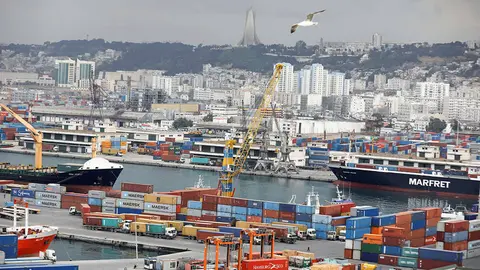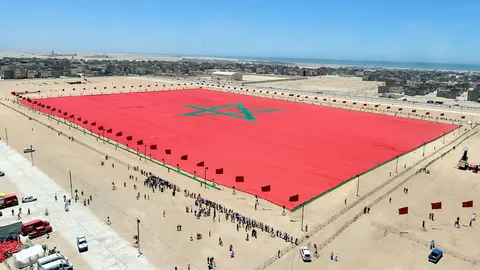Sahara: France Reaffirms Rabat’s Sovereignty - Setting the Record Straight on Media Omissions

- 1. Sovereignty and Decolonization: A Historical Process Predating the 1970s
- 2. The Green March: A Historical Response
- 3. Demography and Electoral Rights: The Exclusion of Displaced Sahrawis
- 4. Judicial Decisions: Beyond the CJEU
- 5. Development of the Sahara: Incomplete Criticism
- 6. Political Progress and International Recognition: A Growing Consensus
- Conclusion
Although these articles aim to offer an objective perspective, they contain significant interpretations and omissions that merit clarification.
1. Sovereignty and Decolonization: A Historical Process Predating the 1970s
Khadija Mohsen-Finan suggests that Morocco sought to “reclaim the southern provinces” following attempted coups in 1971 and 1972 as a means to bolster national unity. However, this view overlooks a critical element: the decolonization process for Western Sahara began well before the 1970s.
In fact, by 1957, the Moroccan Liberation Army was actively working to free the Sahara, only to be interrupted by the joint Franco-Spanish “Écouvillon” operation.
Morocco successfully reclaimed Tarfaya in 1958 and placed the Sahara issue on the United Nations Fourth Committee’s agenda in 1964. The liberation of Sidi Ifni from Spanish colonization followed in 1969. Thus, Morocco’s decolonization efforts were underway as early as the 1950s, long before the emergence of the Polisario Front in 1973, a group initially formed within university circles in Rabat with the objective of integrating Western Sahara into Morocco.
2. The Green March: A Historical Response
Both Frédéric Bobin and Khadija Mohsen-Finan draw connections between the Green March in 1975 and the coups against King Hassan II. However, the Green March—uniting hundreds of thousands of Moroccans—was directly inspired by the International Court of Justice’s advisory opinion, which acknowledged historical ties of allegiance between the Sahrawi tribes and Morocco. This historic event, far removed from domestic political machinations, was a peaceful assertion of Moroccan sovereignty over the region.
3. Demography and Electoral Rights: The Exclusion of Displaced Sahrawis
Ilyes Ramdani raises questions about voter eligibility in a referendum, without acknowledging the Sahrawis displaced northward during Operation “Écouvillon” in 1958.
These displaced individuals are legitimate residents of Western Sahara, and excluding them from any electoral process would be an injustice. Additionally, the CJEU’s claim that 80% of Sahrawis reside in Tindouf camps in Algeria is a gross overestimation. In 1996, the MINURSO Identification Commission reported that 75% of Sahrawis lived in areas administered by Morocco, compared to 25% in Tindouf. This estimate was even conservative, excluding those displaced by Operation Écouvillon.
Today, approximately 85% of Sahrawis reside in the Moroccan Sahara, with the remaining minority—many of Sahelian descent—living in Tindouf camps.
4. Judicial Decisions: Beyond the CJEU
Frédéric Bobin emphasizes CJEU rulings wanting to nullify certain EU-Morocco trade agreements involving the Sahara but overlooks similar rulings in Morocco’s favor by courts in the UK and Australia. For instance, in 2015, the UK High Court of Justice upheld the legality of trade agreements involving the Sahara, and in 2017, the Australian Federal Court dismissed a challenge to importing phosphates from the Moroccan Sahara. Why prioritize CJEU rulings over these Anglo-Saxon decisions?
In 2002, Hans Corell, then the UN’s Legal Counsel, issued an opinion on resource exploitation in Western Sahara, stating that such activities were permissible as long as they benefited the local population. The region has since seen remarkable development, acknowledged by global observers and diplomatic missions alike. Moreover, consultations held with elected Sahrawi representatives showed a voter turnout exceeding 80%, during which Sahrawis freely expressed their perspectives—freedoms absent in Tindouf camps, governed by the Polisario under Algerian military oversight.
Additionally, the “development model” in the Sahara was designed in consultation with elected and civil representatives, ensuring that the population’s needs, as outlined by Corell and European courts, are addressed. Yet, the CJEU has ignored these essential legal and political elements in recent rulings.
5. Development of the Sahara: Incomplete Criticism
Ilyes Ramdani criticizes Morocco’s economic development efforts in the Sahara, relying on sources that do not capture the Sahrawi perspective in its entirety. Morocco has invested substantially in the region’s economic and social infrastructure, reaching levels comparable to major cities. For those who claim Morocco’s interest in the Sahara is solely resource-driven, it should be noted that phosphates from Boucraa represent only 2% of national production, and revenues from Boucraa are dedicated entirely to social projects benefiting local communities.
6. Political Progress and International Recognition: A Growing Consensus
Frédéric Bobin points out the legal intricacies surrounding Western Sahara but fails to acknowledge recent political developments. A growing number of countries now recognize Moroccan sovereignty, a trend noted by the UN Security Council. It is essential to allow the Security Council to fulfill its role and ensure that local populations continue to benefit from European, American, and other partnerships. These agreements provide tangible benefits, yet face potential obstacles from the CJEU’s rulings, which often appear aligned with Polisario interests. Polisario, an organization known for restricting the freedoms of Sahrawis, seeks regional destabilization with support from the Algerian military.
Conclusion
The analyses by Frédéric Bobin, Khadija Mohsen-Finan, and Ilyes Ramdani offer a partial perspective that, despite its intent, misrepresents the reality in Western Sahara. To fully understand this complex issue, we must move beyond fragmented interpretations and consider historical, legal, and political dimensions that contribute to an objective and balanced view.
Lahcen Haddad
International Expert, University Professor, and Senator



